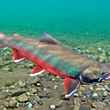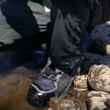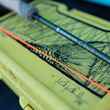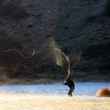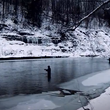Few pesticides are more dangerous than brodifacoum, an anticoagulant used on rodents. And few pesticides have been more grossly abused by homeowners and farmers.
Because brodifacoum accumulates in the liver it can kill any bird or mammal that eats the dead or dying rodents. When applied carelessly on the mainland, nontarget victims have included everything from raptors to fishers, cougars, bobcats, foxes, coyotes, wolves, pet cats and pet dogs.















